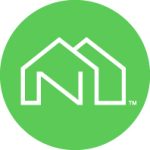One of the key benefits of USDA loans is that they don’t require private mortgage insurance (PMI). However, they do often have criteria for other forms of insurance coverage. Two of the most relevant examples are homeowner’s insurance and flood insurance, both of which have their own sets of requirements to be aware of when pursuing a USDA loan.
What is homeowner’s insurance?
When you secure a USDA loan, you’ll need to have homeowner’s insurance. Sometimes referred to as hazard insurance, homeowner’s insurance serves as a safety net against many unexpected problems in a home, like damage from fire, wind or other weather-related issues. This insurance policy will also protect your USDA lender’s interests by safeguarding collateral.
It’s important to note that your homeowner's insurance policy will not cover some damages, including damage from floods or earthquakes. If you live in an area prone to these events, you’ll want to look for a separate insurance policy specific to your area of concern.
USDA Homeowner’s Insurance Requirements 2025
To meet the home insurance requirements for a USDA loan, you must satisfy the following criteria:
- You must have a pre-paid one-year policy in place. The cost of this policy can typically be rolled into your closing costs, or you may negotiate the expense as part of your seller concessions.
- Your homeowner's insurance policy must provide coverage for at least the amount of the loan or the cost required to entirely replace the home. If the policy amount is less than the loan amount, your insurance company will need to provide a Replacement Cost Estimator (RCE). This document outlines how they calculated the size of your policy and, in most cases, will allow you to bypass this requirement.
- The name on your homeowner's insurance policy must match the name on your USDA loan. Your name, along with all of your other personal information, should be the same on both documents so your lender can easily verify your insurance information.
Your individual USDA lender may have additional homeowner’s insurance requirements to consider. Reach out to your lender for more information before obtaining your insurance policy.
Your annual homeowner’s insurance is typically 0.35% of your home’s value, and the cost will usually be included in your monthly USDA loan payment. Visit our USDA Loan Calculator to get an idea of how homeowner’s insurance may impact your monthly mortgage payment based on your unique loan information.
USDA Homeowner’s Insurance Deductible
For USDA loans, your homeowner’s insurance deductible must not exceed 5% of the total coverage amount on your policy.
Here are a couple of examples to help illustrate how that works:
Example:
If your homeowner’s insurance coverage amount is $200,000, then 5% of that would be $10,000. Your deductible must be $10,000 or less to meet USDA guidelines.
Required Homeowner’s Insurance Documents
To verify your homeowner's insurance policy when closing on your USDA loan, you’ll need to provide the original policy or a Homeowner’s Declaration Page and Invoice for the first year.
Before closing day, you’ll be able to offer proof of homeowner’s insurance to your lender with a wider variety of documents, including Evidence of Insurance, a Memorandum of Insurance, a Certificate of Insurance or an insurance binder.
USDA Flood Insurance Requirements 2025
As mentioned earlier, your homeowner's insurance does not cover flood damage. To protect yourself from flooding-related issues, you will need a separate flood insurance policy with your USDA loan.
USDA lenders will require flood insurance for any property that is located in a Special Flood Hazard Area (SFHA). Your lender will complete FEMA Form 086-0-32, or the “Standard Flood Hazard Determination Form,” on your behalf and notify you if any portion of your property is located in an SFHA. USDA flood insurance requirements do not apply to secondary structures, such as garages or sheds, that are not attached to the primary home structure.
For properties that are located in SFHAs and therefore require flood insurance, the flood insurance policy amount must either:
- Cover the balance of your USDA loan OR
- Meet the maximum amount allowed under FEMA’s National Flood Insurance Program (NFIP).
The size of your policy must equal the lesser amount of these two values. Speak with your USDA lender to determine the required amount for your individual circumstances.
USDA Flood Insurance Deductible
To meet USDA guidelines, your flood insurance deductible must be equal to or less than $10,000.
The Bottom Line
Aside from merely being requirements, homeowner’s and flood insurance offer significant benefits to you as a homeowner. These policies provide protection and peace of mind to protect your property from unexpected damage.
Understanding and complying with the insurance requirements for USDA loans is an important step to ensure a smooth loan approval process. Contact a specialist here at Neighbors Bank if you have any questions about homeowners or flood insurance or are looking to begin the USDA loan process.
